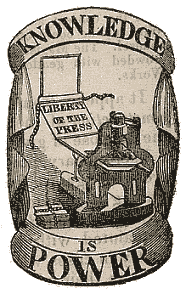IN THE NAME OF DOING GOOD FOR THE EARTH, ANOTHER DEAL THAT WAS LITTLE PUBLICIZED IN THe MSM has already Affected THE WAY ASTHMATICS ARE TREATED. This diabolical Montreal Protocol was signed in Montreal by 138 countries and the USA in 1986. By 2007 there were 19 additional meetimgs to solidify the strangle hold Environmentalists have over our lives.
It's full effect wasn't mandated until 2003, also with little press coverage. The protocol has affected the effectiveness that prescribed medicines have on Asthma patients.
The following is an excerpt from an article by Steven Rosenberg that will explain the politics of this semi-secret deal that was never approved by the US Senate!
By Steven Reinberg
FRIDAY, May 30 (HealthDay News) — Asthma inhalers that contain the drug albuterol to relax the airways also contain chemicals that harm the ozone layer. And these inhalers won't be available after this year, so U.S. health officials are urging patients to switch to alternative inhalers now.
Chlorofluorocarbons, or CFCs, are widely used to propel inhaled drugs into the lungs. However, products containing CFCs are being phased out, because the chemicals damage the Earth's protective ozone layer. CFC inhalers are being replaced by inhalers powered by HFAs, or hydrofluoroalkanes, which are ozone-friendly.
The change to HFA-powered inhalers has been in the works for several years, but the FDA issued an advisory,urging patients still using CFC inhalers to switch now. Inhalers containing CFCs are not now available.
FDA officials said people with respiratory problems, such as asthma and chronic obstructive pulmonary disease, may need some time to acclimate to HFA-based inhalers.
"There are 52 million prescriptions written for albuterol inhalers each year in the United States," Dr. Badrul Chowdhury, director of the U.S. Food and Drug Administration's Division of Pulmonary and Allergy Products, said during a teleconference. Albuterol is used to treat shortness of breath in people with asthma and chronic obstructive pulmonary disease, he noted.
Chowdhury said that approximately 65 percent of inhaler users have already switched to HFA inhalers.
"These new handlers may taste and feel different than the current CFC inhalers," he said. "In addition, HFA inhalers may feel softer than CFC inhalers."
And I for one can testify that they do not work as well, as I am a Asthmatic who suffers from periodic episodes that have led to hospital admissions to save my life!
Also, patients using HFA inhalers will have to prime and clean them to prevent the buildup of albuterol in the inhalers' nozzle. This buildup could block the medicine from reaching the lungs, Chowdhury said.This is more work, and a potential for serious side affects for those who are unable or not smart enough to clean the new asthma sprayers properly!
Each HFA inhaler has a different priming mechanism and cleaning and drying instructions. So, users should carefully read the instructions before using the inhaler. And HFA inhalers may cost more, because there's no generic HFA inhaler available yet, Chowdhury said.
Three HFA-propelled albuterol inhalers have been approved by the FDA: Proair HFA Inhalation Aerosol; Proventil HFA Inhalation Aerosol; and Ventolin HFA Inhalation Aerosol. Also, an HFA-propelled inhaler containing levalbuterol, a medicine similar to albuterol, is available as Xopenex HFA Inhalation Aerosol, the agency said.
Dr. Ira Finegold, chief of the Division of Allergy and Clinical Immunology at St. Luke's-Roosevelt Hospital Center in New York City, doesn't see much difference in the effectiveness of the two types of inhalers. "The end result — if you need it, does it open up your lungs? Yes, it does," he said.
However, the changeover will involve some patient education, he said. "The old medication, CFC albuterol, was really a very nice product, because the propellant got in your body and came out of your body — it wasn't absorbed. And remarkably, it is a cleaning agent, so the device was self-cleaning."
The new HFA propellant is safe in the body but can clog the inhaler, Feingold said. "So, after use, these inhalers need to be rinsed out or they are not going to work correctly," he said.
"In addition," Feingold added, "each of the four new inhalers on the market is different in the number of times you have to prime it. There is also a little difference in feel and taste."
The discontinuation of CFC-propelled inhalers is the result of the U.S. Clean Air Act and an international treaty known as the Montreal Protocol(1986) on Substances That Deplete the Ozone Layer.
Under provisions of this treaty, the United States agreed to stop the production and importation of substances that damage the ozone layer, including CFCs, according to the FDA.
SOURCES: May 30, 2008, teleconference with Badrul Chowdhury, M.D., Ph.D., director, Division of Pulmonary and Allergy Products, Center for Drug Evaluation and Research, U.S. Food and Drug Administration; Ira Finegold, M.D., chief, Division of Allergy and Clinical Immunology, Department of Medicine at St. Luke's-Roosevelt Hospital Center, New York City
If that were all that the Montreal Protocol affected, it would be just a problem that a relatively small group of sick Americans had to deal with, But it is only one of many problems caused by this miserable excuse for a "protocol!"
The Montreal Protocol is an international treaty developed to protect the earth from the detrimental effects of ozone depletion. Since it was begun in the late 1980's, it has been signed by over 160 countries ("Parties" to the Treaty), and controls the production and trade of ozone depleting substances on a global basis. This Treaty is now phasing out the CFCs and other ozone depleting compounds on a world-wide basis
Under the Clean Air Act and Montreal Protocol, production of methyl bromide, a widely used fumigant in agriculture and forestry has also been phased out due to claims that it contributes to ozone depletion.
It is critical that current efforts continue to quickly develop and implement economically viable and environmentally sound alternatives. Our food chain depends on protecting it from destruction in the growth fields from voracious insects!
"The role of methyl bromide as an ozone-depleting compound is now considered to be less than was estimated in the 1994 Assessment, although significant uncertainties remain. The current best estimate of the Ozone Depletion Potential (ODP) for methyl bromide is 0.4 (with a range of 0.2 to 0.5), as compared to an ODP of 0.6 (with a range of 0.3 to 0.9) estimated in the previous Assessment (1994). The change is due primarily to both an increase in the estimate of ocean removal processes and the identification of an uptake by soils, with a smaller contribution from the change in our estimate of the atmospheric removal rate. Recent research has shown that the science of atmospheric methyl bromide is complex and still not well understood. The current understanding of the sources and sinks of atmospheric methyl bromide is incomplete."
Despite this the "Enviro zealots"took a tool out of the hands of farmers, and have as yet not found asingle replacement for the wide range of fumigation that methyl-bromide gave to our farmers.
All this, because so called "experts" decided that:"If methyl bromide use is not controlled in a timely manner, atmospheric scientists believe, emissions will contribute to a thinning of the ozone layer and will allow increased amounts of radiation to reach the earth's surface. This will have potential impact not only to human health, including skin cancer and the environment, but to agricultural crops as well".
The conclusion statement of the committee that has followed the nineteen International meetings since Montreal is revealing in the stark admission that the protocol and it's mandates were made despite the derth of exact scientific evidence.
The following is an excerpt from a paper written by Richard Benedict entitled; "Lessons From The Montreal Protocol". " Faced with a new generation of global environmental threats, governments must act while some major questions remain un?resolved. In achieving the Montreal accord, consensus was forged and decisions were made on a balancing of probabilities – and the risks of waiting for more complete evidence were finally deemed to be too great. In the real world of ambiguity and imperfect knowledge, the Montreal Protocol may hopefully be the forerunner of an evolved partnership between scientists and policy makers, as sovereign nations seek ways of dealing with uncertain dangers and accepting common responsibility for stewardship of Planet Earth".This only dem onstrates that if you tell a lie often enough, people will eventually believe you!
If this was not enough to worry you, there are forces that wish to destroy our economy by controling population. "Several authors identify energy as a limiting factor in population size. David and Maria Pimentel point out that the U.S. achieves its high agricultural yields through a prodigious use of finite fossil fuel and ground water resources. Paul Werbos notes that renewable energy and conservation cannot fill the energy needs of an increased population at our present standard of living. Paul and Anne Ehrlich argue that due to wasteful technology and consumption patterns, Americans do much more damage to the planet than the more numerous third world poor. These chapters present a convincing case that the U.S. population should be reduced below current levels.
These are all part of the new home of the Marxist Humanists who promote abortion and Euthanasia!
Saturday, July 26, 2008
Subscribe to:
Post Comments (Atom)








1 comment:
The American Physical Society, an organization representing nearly 50,000 physicists, has reversed its stance on climate change and is now proclaiming that many of its members disbelieve in human-induced global warming. The APS is also sponsoring public debate on the validity of global warming science. The leadership of the society had previously called the evidence for global warming "incontrovertible." In a posting to the APS forum, editor Jeffrey Marque explains, "There is a considerable presence within the scientific community of people who do not agree with the IPCC conclusion that anthropogenic CO2 emissions are very probably likely to be primarily responsible for global warming that has occurred since the Industrial Revolution."
Post a Comment